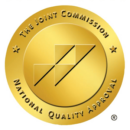Disclaimer: The content in this blog is intended for informational purposes only and should not be considered a substitute for medical advice from a healthcare provider. It is not meant for the diagnosis or treatment of any illness or medical condition. In non-emergency situations, Discovery Institute is available to guide recovery, well-being, and assistance.
Trazodone and Ambien (zolpidem) are both prescription drugs that can be used to treat sleep disorders like insomnia. Trazodone is typically prescribed as an antidepressant and Ambien is a non-barbiturate hypnotic. This means that they both work to improve sleep but in different ways.
Let’s look at a comparison:
Trazodone
- Trazodone is the generic name for Desyrel and Oleptro.
- It was primarily developed as an antidepressant. It works by helping to increase the availability of serotonin in the brain. Serotonin is considered a natural mood stabilizer. It is also the chemical that helps with sleeping, eating, reducing depression, and regulating anxiety.
- Trazodone is approved by the FDA to treat depression, but it is frequently used “off label” at lower doses to treat insomnia.
- Not as effective as other medications for depression.
- Causes more side effects when used for depression at higher doses including upset stomach and irregular heartbeat.
- Doses of trazodone can vary with the individual. To treat insomnia, 50 to 100mg before bedtime is a common dosage. Trazodone reaches its maximum levels in the body within one hour after consumption. However, it may take from 1 to 6 weeks to reach trazodone’s maximum effects.
Side Effects
- Drowsiness, Fatigue, Headache—Also called the trazodone “hangover”
- Diarrhea
- Blurred vision
- Higher risk of suicidal thoughts and behavior for people age 24 and younger
Call Discovery today to schedule a free evaluation
Our compassionate counselors are standing by to answer any questions you may have. During the confidential evaluation, Discovery’s clinicians will determine the appropriate level of care for you.
Serotonin Syndrome
Serotonin is a chemical your body makes that is needed for your nerve cells and brain to function. Serotonin syndrome is a possible and serious side-effect of any serotonin medication. As the drug increases the concentrations of serotonin in the brain, the neurotransmitters cause widespread changes in the body. Some of these changes can be fatal. Using high doses of trazodone can cause symptoms of Serotonin Syndrome such as:
- High body temperature
- Agitation
- Excessive sweating
- Increased reflexes
- Fast heart rate
- Breakdown of muscle tissue
- Seizures
- Muscle tremors
- Diarrhea
- Coma
- Death
Drug Interactions
- Central Nervous System depressants like alcohol and barbiturates
- Muscle relaxers
- Warfarin
- Digoxin
- Medications that cause drowsiness
Ambien
- Ambien is a brand name for zolpidem.
- It is prescribed specifically to treat insomnia. Ambien is a non-barbiturate hypnotic which affects the receptors in the brain responsible for slowing down brain activity.
- Can be habit-forming.
- It is usually taken as a 5mg or 10mg tablet at bedtime with at least 7 to 8 hours allowed for a full night’s sleep.
- Effective to help people fall asleep quickly and sleep longer.
- Long-term treatment (more than 10 days) with Ambien is not recommended.
- May not be safe if you have liver, kidney, and lung problems or a history of depression.
Common Side Effects
- Drowsiness
- Dizziness
- Diarrhea
- Grogginess
- More likely to cause sleepwalking, sleep-driving, and sleep-eating
Drug Interactions
- Central Nervous System depressants like alcohol or barbiturates
- Muscle relaxers
- Medications that treat muscle weakness and narcolepsy
- Medications that may cause drowsiness
What are the Symptoms of Trazodone Misuse?
Signs of trazodone misuse can lead to behavioral changes such as:
In Adolescents
- Skipping school
- Loss of interest in sports or other activities
- Lack of personal grooming
- A decline in school performance
- Problems with relationships with family and friends
In Adults
- Frequently miss work
- Lose interest in hobbies they used to enjoy
- Asking to borrow money from relatives and friends
- Being secretive
Long-term Use of Trazodone
Long-term use of sedatives like trazodone can cause:
- Memory loss
- Sudden emotional shifts
- Involuntary eye movements
- Difficulty thinking clearly
- Difficulty understanding others when they speak
- May also cause the user to speak slowly
Is Trazodone Addictive?
There has been an increase in the harmful use of all prescription drugs in this country including antidepressants. The National Survey on Drug Use and Health (NSDUH), reported in 2018 that about 243,000 people, ages 12 and older were current misusers of prescription sedatives like trazodone. Subsequently, misuse of trazodone and other sedatives has increased especially among adolescents and young adults.
Although there is a relatively small number of people reported as being addicted to trazodone, there are still some people who use it recreationally. It’s not used for a euphoric “high.” Instead, it is used for its sedative effects and, for some people, for the level of cognitive impairment it causes.
The National Institute of Drug Abuse has stated that people who use it for non-medical reasons (to seek a high) are more likely to become addicted. Some people take large doses of trazodone for the mild high it produces but taking larger doses can cause hallucinations. This puts these users at higher risk for addiction and overdose.
The speed with which trazodone helps anxiety attacks is one of the reasons it is prescribed. However, over time the individual’s tolerance level increases, requiring higher doses to be effective. Therefore, this can lead to addiction, even with a doctor’s prescription.
Signs of Trazodone Addiction
Signs of trazodone addiction include:
- Attempting to get trazodone without a prescription
- Using up a prescription before the refill date
- Combining trazodone with other drugs and alcohol
- Doctor shopping for more trazodone prescriptions
- Illegally buying trazodone
- Use of trazodone begins to interfere with other parts of life such as work, school, and personal responsibilities
- Taking trazodone to get high instead of treating depression or insomnia
- Needing high doses to feel the effects
Trazodone Overdose
According to the National Institute on Drug Abuse (NIDA), in 2017, more than 5,000 U.S. deaths involved an antidepressant. Some were the result of antidepressants combined with opioids and some were combined with synthetic narcotics.
People who use trazodone for long periods frequently develop a tolerance to the drug. As tolerance develops, it takes more of the drug or more frequent doses to produce the same effects that occurred initially. Increasing the amount taken each day increases the risk of overdose. And the repeated high dosage by people who misuse the drug recreationally puts them at high risk for overdose.
Symptoms of Trazodone Overdose include:
- Difficulty breathing
- Chest pain
- Abnormal heart rhythms
- Seizures
- Loss of muscle coordination
- Nausea and vomiting
- Painful erection that doesn’t go away
- Respiratory arrest
- Coma
Who is Most at Risk?
- Recreational users using high doses for the hallucinogenic effects
- Long-term users who have built up a tolerance for the drug and require larger doses to achieve the desired effects
- People who mix trazodone with other drugs or alcohol
What are Withdrawal Symptoms from Trazodone?
When an individual is addicted to trazodone, they will have painful side-effects known as withdrawal symptoms when the drug leaves their body. The body has adapted to regular high doses of trazodone by changing the receptors it interacts with.
When there is no more of the drug in the body, these changes cause a sick feeling. The body has been compensating for the trazodone effects so without the drug, we lose the ability to regulate those affected neurotransmitters on our own. Withdrawal symptoms include:
- Severe depression
- Insomnia
- Anxiety
- Erectile dysfunction
- Agitation
- Suicidal thoughts
Is Trazodone Safer than Ambien?
There have been several studies that show that trazodone may improve sleep during the first two weeks of treatment. However, the drug hasn’t been thoroughly studied for longer than six weeks for people whose main problem is insomnia. As a result of that, not enough is known about how it works or how safe it is after that point. Also, an effective dose rate hasn’t been established for the drug when it’s used for chronic insomnia, although lower doses are usually prescribed.
Treatment guidelines from the American Academy of Sleep Medicine don’t recommend trazodone for insomnia. There isn’t enough evidence to support using any antidepressant to treat insomnia. But still, data suggests that some doctors are convinced that trazodone is an appropriate sleep medication.
Ambien Safety
According to Eric J. Olson, M.D., it’s unlikely for a person to become dependent on zolpidem (Ambien). Ambien and similar medications can be effective for sleep problems. And it is much less likely to become habit-forming than some other medications that are prescribed, such as benzodiazepine drugs. Medications for sleep are useful in the short term but long-term use isn’t the best solution for insomnia. Sleep medications can hide an underlying problem that needs to be addressed.
Four Steps in the Treatment of Trazodone Addiction
Step 1. Assessment
The first step in treating trazodone addiction is to check out the treatment facility you’re thinking of using. Learn about the programs and services available. After becoming oriented to the facility, you will need a professional assessment to determine your needs and to develop a specific treatment plan for you.
Step 2. Detoxification
The next step is a medically supervised detox to gradually eliminate trazodone from your body. This reduces the risks of severe withdrawal symptoms, some of which are life-threatening.
Step 3. Treatment
This step uncovers and treats the underlying causes of the addiction and gives you the tools to overcome the addiction and resist triggers. You will have the chance to take part in therapy in group sessions and one-on-one with your counselor. Therapy sessions and social support are necessary for changing the harmful thoughts and behaviors that caused your addiction. Social support is also a key part of maintaining your recovery.
While you attend therapy sessions, you will either live at the facility as part of a residential program. Or you may attend therapy sessions during the day and go home every evening as part of an outpatient program. These issues will be discussed with input from your doctors, therapist, and yourself as to what is best for you.
Step 4. Aftercare
The purpose of the last phase is to assist you in transitioning into programs that will help continue the lifelong process of recovery. You may choose to continue counseling, join support groups such as narcotics anonymous, or look into sober housing. Studies show that people who take part in some type of aftercare have a better chance of preventing relapse.
Find a Treatment Center
Sudden withdrawal from trazodone can have serious consequences. You need a treatment center that is experienced in the detox process. Discovery Institute has licensed medical professionals who can help you ease your way through withdrawal.
In addition, we have certified substance use counselors to help you discover your reasons for misusing trazodone and help you learn new thoughts and behaviors to stay clean. So don’t wait. Check out our facility. Contact us now. We are always available to you and all information is confidential.
Dr. Joseph Ranieri D.O. earned his BS in Pharmacy at Temple University School of Pharmacy in 1981 and His Doctorate Degree in Osteopathic Medicine at the Philadelphia College of Osteopathic Medicine in 1991. He is Board Certified by the American Board of Family Medicine and a Diplomate of the American Board of Preventive Medicine Addiction Certification. Dr. Ranieri has lectured extensively to physicians, nurses, counselors and laypeople about the Disease of Addiction throughout New Jersey and Pennsylvania since 2012.



